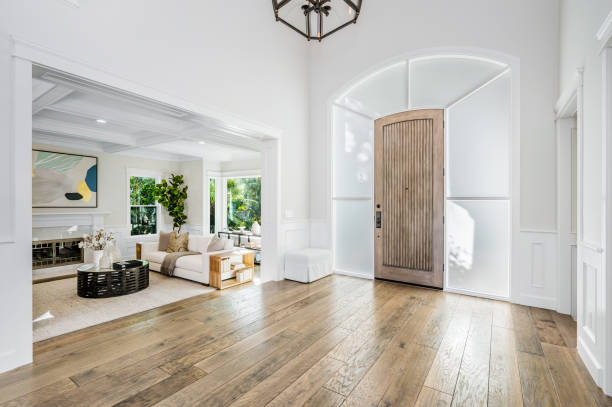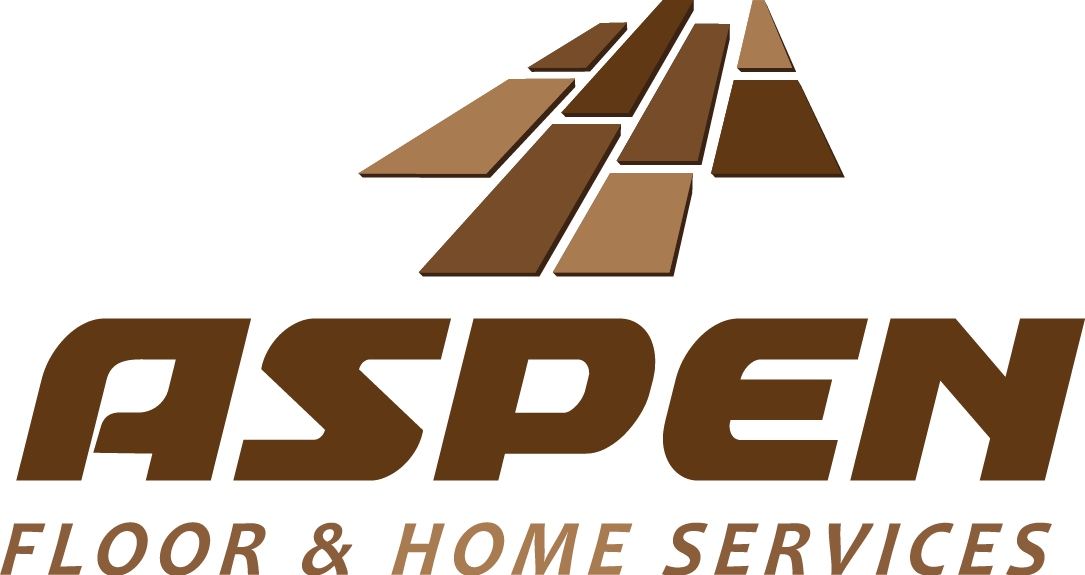When it comes to installing nail down hardwood flooring in Denver, CO, homeowners face unique challenges due to the city’s high altitude and dry climate.
These environmental factors can significantly impact the performance and longevity of your hardwood floors, making it crucial to follow expert installation techniques.

In this guide, we’ll share five essential tips to help you achieve a flawless nail down hardwood flooring installation that can withstand Denver’s specific conditions.
From acclimation to underlayment selection and beyond, these insights will ensure your floors look stunning and remain durable for years to come.
Acclimating Hardwood Flooring for Denver’s High Altitude
Proper acclimation is crucial for nail down hardwood flooring installations, especially in Denver’s high-altitude environment.
Failing to acclimate your hardwood can lead to issues like warping, cupping, and gaps between planks.
To acclimate your hardwood flooring for Denver’s altitude, follow these steps:
- Allow the flooring to sit in the installation space for at least 7-10 days, or as recommended by the manufacturer
- Maintain a consistent room temperature between 60°F and 80°F during acclimation
- Keep the relative humidity level between 30% and 50% using a humidifier or dehumidifier
- Stack the flooring boards in a crisscross pattern to encourage even airflow
- Use a moisture meter to ensure the flooring has reached equilibrium moisture content (EMC) before installation
| Denver Climate Factor | Impact on Hardwood Acclimation | Solution |
|---|---|---|
| High Altitude | Lower air pressure and humidity levels | Allow extra time for acclimation |
| Dry Climate | Increased risk of moisture-related issues | Maintain consistent humidity levels |
| Temperature Fluctuations | Expansion and contraction of wood | Keep indoor temperature stable |
By taking the time to properly acclimate your nail down hardwood flooring, you’ll minimize the risk of altitude-related issues and ensure a successful installation in Denver.
Controlling Hardwood Floor Movement in Denver’s Dry Climate
Denver’s dry climate can cause hardwood flooring to expand and contract more than in other regions, leading to potential gaps, buckling, or cracking.
To manage these issues, consider the following tips:
- Choose hardwood species known for their stability, such as white oak, hickory, or maple
- Opt for quarter-sawn or rift-sawn planks, which are less prone to movement than plain-sawn boards
- Maintain consistent indoor humidity levels between 30% and 50% year-round
- Use a humidifier in the winter and a dehumidifier in the summer to control moisture
- Allow for proper expansion gaps around the perimeter of the room during installation
In addition to these measures, it’s essential to establish a regular maintenance routine to protect your nail down hardwood flooring from seasonal changes.
This may include:
| Season | Maintenance Task | Benefit |
|---|---|---|
| Spring/Summer | Clean and polish floors | Remove dirt and restore shine |
| Fall/Winter | Check for gaps and apply wood filler | Prevent moisture intrusion and drafts |
| Year-Round | Monitor humidity levels and adjust as needed | Maintain stability and prevent damage |
By understanding how Denver’s dry climate affects hardwood flooring and taking proactive steps to manage expansion and contraction, you can keep your floors looking beautiful for years to come.
Choosing the Best Underlayment for Hardwood Floors in Denver Homes
Selecting the right underlayment is crucial for a successful nail down hardwood flooring installation in Denver.
The underlayment provides a stable foundation, reduces noise, and helps protect against moisture.
When choosing an underlayment for your Denver home, look for the following features:
| Feature | Benefit | Recommended Material |
|---|---|---|
| Moisture Resistance | Protects against humidity-related damage | Asphalt-saturated kraft paper |
| Sound Insulation | Reduces noise transmission between floors | Cork or foam padding |
| Thermal Insulation | Helps maintain consistent floor temperature | Foam or felt with reflective barrier |
While some underlayment materials offer multiple benefits, it’s essential to choose one that prioritizes moisture resistance in Denver’s dry climate.
Asphalt-saturated kraft paper is an excellent choice, as it provides a vapor barrier while allowing the flooring to breathe.
Proper underlayment installation is just as important as selection. Ensure the subfloor is clean, dry, and level before laying the underlayment, and follow the manufacturer’s instructions for installation and fastening.
Techniques to Prevent Nail Damage During Hardwood Flooring Installation
Improper nailing techniques can lead to splitting, cracking, or dimpling of your hardwood planks, compromising the flooring’s appearance and structural integrity.
To prevent nail damage during installation,
keep these expert tips in mind:
- Use a pneumatic flooring nailer designed for hardwood to ensure consistent pressure and depth
- Choose cleats over staples for a more secure hold and less visible fastening
- Adjust the nailer’s pressure and depth settings according to the hardwood species and thickness
- Angle the nailer slightly away from the edge of the plank to avoid splitting
- Countersink nails below the surface of the wood to prevent catching or snagging
In addition to these techniques, it’s crucial to maintain proper spacing and alignment of planks during installation.
Use spacers to ensure consistent gaps between boards and stagger the end joints for a more stable, visually appealing floor.
| Nailing Technique | Benefit | Tools Needed |
|---|---|---|
| Blind Nailing | Conceals fasteners for a clean look | Pneumatic flooring nailer, cleats |
| Face Nailing | Secures first and last rows, transitions | Finish nailer, color-matched nails |
| Glue Assist | Adds stability in high-humidity areas | Urethane adhesive, trowel |
By following these nailing techniques and using the right tools, you can achieve a flawless nail down hardwood flooring installation that enhances the beauty and durability of your Denver home.
Steps to Avoid Gaps and Warping in Nail-Down Hardwood Flooring in Denver
Denver’s unique climate can exacerbate issues like gapping and warping in nail down hardwood flooring.
To minimize these problems and maintain the longevity of your floors, take the following preventative measures:
- Ensure proper acclimation of hardwood flooring before installation
- Maintain consistent indoor temperature and humidity levels year-round
- Use a moisture meter to check subfloor and flooring moisture content before installation
- Install the flooring perpendicular to the floor joists for added stability
- Allow for adequate expansion gaps around the perimeter and near fixed objects
Even with the best preventative measures, minor gaps or warping may occur over time due to Denver’s climate.
To address these issues without replacing the entire floor, try the following techniques:
- For small gaps, apply a wood filler or putty that matches the color of your flooring
- For larger gaps or warping, use a humidifier to introduce moisture and help the planks expand back into place
- If the issue persists, consult a professional hardwood flooring contractor for repair or replacement options
Regular maintenance, such as sweeping, vacuuming, and promptly cleaning spills, can also help prevent gaps and warping by keeping your nail down hardwood flooring free of debris and moisture.

Why Nail-Down Hardwood Flooring Matters in Denver’s Unique Climate
Denver’s high altitude and dry climate present distinct challenges for hardwood flooring installations.
By understanding these factors and implementing proper techniques, you can ensure your nail down hardwood flooring remains beautiful, stable, and durable for years to come.
Investing in quality materials and expert installation offers numerous benefits, including:
- Enhanced longevity and performance of your hardwood floors
- Prevention of costly repairs or replacements due to climate-related damage
- Improved indoor air quality and comfort through proper humidity control
- Increased home value and aesthetic appeal with well-maintained hardwood flooring
When you work with experienced professionals who specialize in nail down hardwood flooring installation in Denver, you can trust that your floors will receive the care and attention needed to thrive in our unique climate.
If you’re considering nail down hardwood flooring for your Denver home, remember to prioritize acclimation, moisture control, underlayment selection, and precise installation techniques.
By following these expert tips and partnering with a trusted local contractor, you can achieve a flawless installation that will stand the test of time in Denver’s demanding climate.
FAQs
What is the best way to acclimate hardwood flooring for Denver’s altitude?
To acclimate hardwood flooring for Denver’s high altitude, allow the flooring to sit in the installation space for at least 7-10 days, maintain a consistent temperature between 60°F and 80°F, keep the relative humidity between 30% and 50%, stack the boards in a crisscross pattern, and use a moisture meter to ensure the flooring has reached equilibrium moisture content before installation.
How do Denver’s dry conditions affect hardwood flooring expansion and contraction?
Denver’s dry climate can cause hardwood flooring to expand and contract more than in other regions, leading to potential gaps, buckling, or cracking. To manage these issues, choose stable hardwood species, maintain consistent indoor humidity levels, allow for proper expansion gaps during installation, and follow a regular maintenance routine.
Which underlayment is best suited for hardwood flooring in Denver homes?
When selecting an underlayment for nail down hardwood flooring in Denver, prioritize moisture resistance to protect against humidity-related damage. Asphalt-saturated kraft paper is an excellent choice, as it provides a vapor barrier while allowing the flooring to breathe. Other features to consider include sound and thermal insulation.
How do you ensure the nails won’t damage hardwood flooring during installation?
To prevent nail damage during hardwood flooring installation, use a pneumatic flooring nailer designed for hardwood, choose cleats over staples, adjust the nailer’s pressure and depth settings according to the hardwood species and thickness, angle the nailer slightly away from the edge of the plank, and countersink nails below the surface of the wood.
What are the key steps to prevent gaps and warping in nail-down hardwood flooring in Denver?
To prevent gaps and warping in nail-down hardwood flooring in Denver, ensure proper acclimation before installation, maintain consistent indoor temperature and humidity levels, check subfloor and flooring moisture content, install the flooring perpendicular to floor joists, and allow for adequate expansion gaps. Regular maintenance and prompt attention to any issues can also help preserve the flooring’s integrity.

